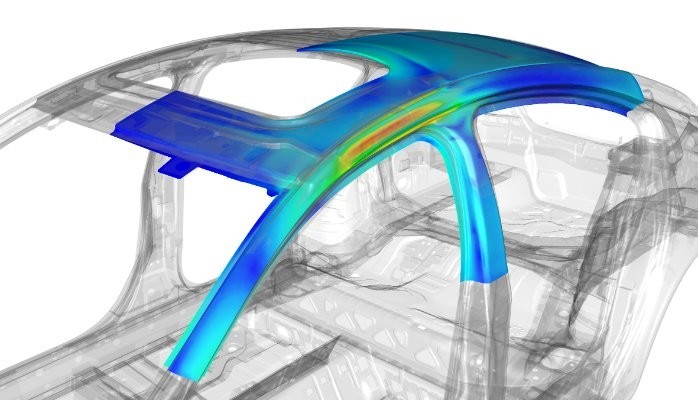
Broadly speaking, Computer Assisted Engineering (CAE) is the process of solving engineering problems through the use of sophisticated, interactive graphical software. It includes the series of disciplines which aim at digitally testing and verifying a product’s functions, properties and behaviour prior to physical prototype validation. CAE is typically carried out in the form of Finite Element Analysis, Kinematics, Thermal analysis, Electrical, Fluid Dynamics, (…) using product data such as Bills of Material (BoMs), material and other property data, CAD representations, variant and configuration information, boundary conditions, interface data, etc. created upstream by Product Development & Design teams.
Manufacturing organizations uses CAE to design and simulate solutions that are then to be mass produce products in a factory-based environment. It allows for more computations than is possible by hand, especially when it is coupled with data optimization systems and Simulation Life-cycle Management (SLM) solutions. This also links to Product Life-cycle Management (PLM).
Effective SLM is to enable the realization of one or more of the following 10 business benefits:
- Lean CAE processes: standardised, repeatable and automated CAE processes
- Reduced CAE build process time: for BoM verification, geometric and non-geometric data extraction
- Reduced error states in CAE models and results: better data availability, traceability, and accuracy
- Increased visibility and better problem solving ability: earlier identification and resolution of issues
- Increased re-use of knowledge and processes: common optimized CAE templates, while also allowing to run ‘ad hoc’ simulations
- Automated big data reporting and ‘single source of the truth‘ dashboarding
- Increased data traceability: informed decision making and improved impact analysis
- Enhanced ‘rolled-up‘ or ‘consolidated‘ view of the CAE simulation activities: across product lines, ranges or platforms
- Better upstream and downstream Product Development process and data (PLM-SLM) integration: clear accountability and data associativity
- End-to-end verification and validation traceability from requirement (V-model): full systems engineering cycle
What are your thoughts?
This post was originally published on LinkedIn on 2 July 2015.

